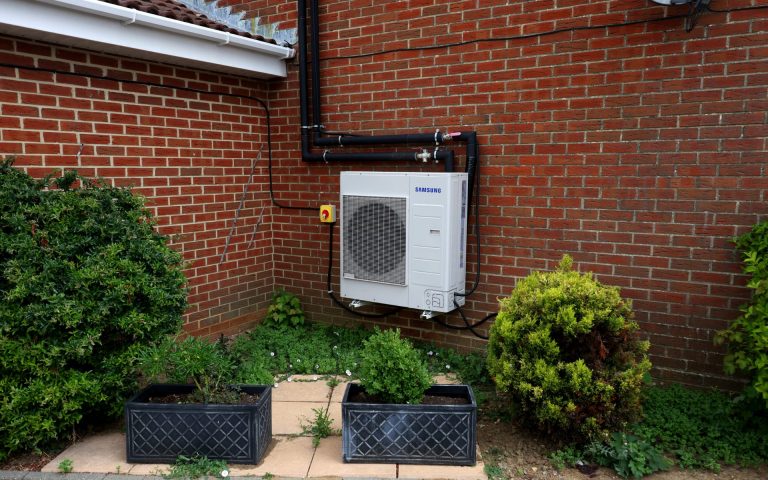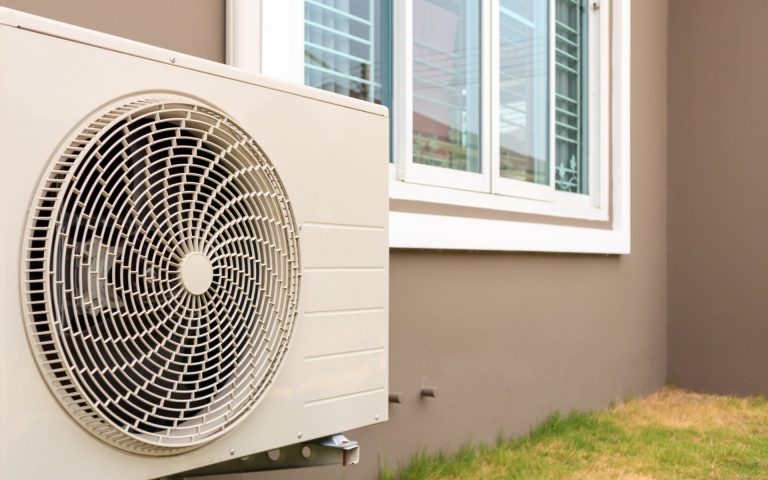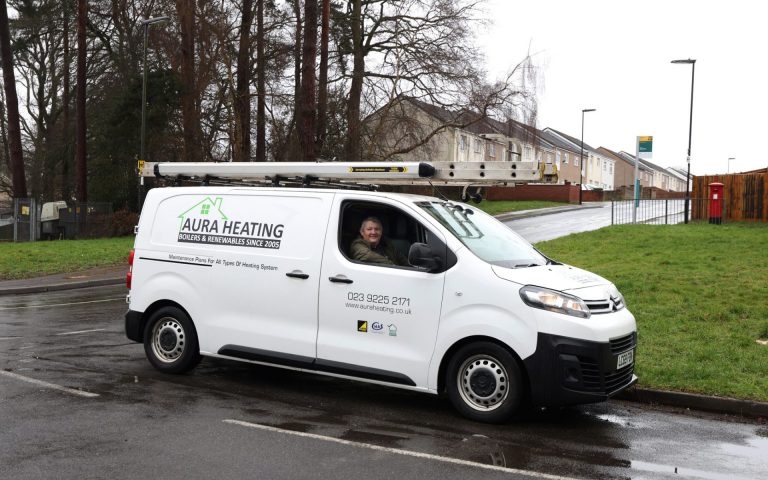Maybe you’ve just moved into a new property and the boiler isn’t where you would choose to put it. Or maybe the location of your boiler has been driving you up the wall for years and you’ve finally had enough. Perhaps you just want to free up some space for a bit of much-needed storage. Whatever the reason for wanting to move your boiler, there are a few things to consider first.
You’ll most likely find the boiler in the kitchen or utility room, which isn’t always the most efficient use of space. The good news is that if you have a modern condensing boiler, then you can move the boiler almost anywhere you like! The loft, bathroom, or even a bedroom if you wanted to.
It’s a choice that needs to be thought about and planned though as:
- It will need at least two gas safe heating engineers to do the job
- It can take between 2 and 4 days to complete
- It can be pricey too with costs of up to nearly £3K in some cases
So let’s have a look at the reasons why you might want to move your boiler, and whether it’s worth the upheaval.
Why would you move a boiler?
It’s most likely that your boiler is housed in a kitchen cupboard. Perhaps you might like that cupboard to be of use for storage?
Or maybe it’s in a communal room that’s well used throughout the day, and you’re a bit fed up of the disturbance that the noise from your boiler is making. They all make a bit of noise – Even the modern ones!
It could even be that the placement of your boiler means that getting hot water where you need it is rather slow.
Moving your boiler could mean more usable space, more peace and quiet and getting your hot water faster (if you have a combi boiler).
How much does it cost to move a boiler?
Moving a boiler is not a cheap task, and costs on average between £800 and £2800. There are a lot of different factors and parts to consider when calculating the costs of moving a boiler. It also depends on how difficult it is to move it!
So what costs can you expect when moving a boiler? Here are some things to consider.
- A new boiler flue @ £70-£120, as well as extension flue pipes or flue bends @ £40 per metre. If you are moving the boiler from the kitchen to the attic, you will likely need to change it from a horizontal flue to a vertical one.
- You might want to take the opportunity to install a magnetic filter – This would cost around £100-£120.
- Controls differ heavily in price depending what you are looking for, starting from £70 but costing as much as £650.
- The amount of pipework and fittings you’ll need will depend on how complex the boiler move is. The cheapest option is if you are only moving it by a few feet. The further the boiler is moved, the more pipework you’ll need so the higher the cost. It would likely be between £300 and £600.
- Bear in mind any additional work needed to move the boiler, for example, lifting floorboards, drilling and patching holes in walls for pipework etc which will all involve additional costs.
- A crucial part of any boiler move is performing a power flush to clear away any dirt or debris in the heating system, enabling it to work more efficiently. The cost o fa power flush starts from around £300.
- If you are planning to move an older boiler to a new location, it would make sense to replace the boiler at the same time. Moving an old boiler (more than 8 years old) is the most expensive option, but upgrading it to a newer model at the same time will make your heating system more efficient, more reliable, safer and could even lower your energy bills too!
This is a rough guide – For an accurate estimate of how much it would cost to move your boiler, you would need to have a heating engineer come out to your home to have a look.
Where can I move my boiler to?
The main things to consider when moving a boiler is what type of boiler it is, where you are wanting to move it to, and how far that is from its original location.
If you have a combi boiler, you can fit the boiler in any of these locations:
- An airing cupboard
- The attic / loft
- A bathroom
- A bedroom
- The garage
- Your kitchen
- The utility room
Unfortunately it’s a bit more restrictive if you have a system or regular boiler. (You can read more about types of boiler here). These types of boiler have external parts in addition to the actual boiler. Both a system and regular boiler also require a hot water cylinder (which stores hot water for your taps). You will often find this cylinder in the airing cupboard (its warmth helps to keep your laundry dry!). A regular boiler will also need a feed and expansion tank directly above the boiler in the loft. All things to consider if you are wanting to relocate the boiler!
Each of the above locations have pros and cons when it comes to locating your boiler there. Let’s take a look at some of the things to think about before making the move.
Moving Your Boiler to the Airing Cupboard
As we said above, you tend to find the hot water cylinder in the airing cupboard. Some people are choosing to move their hot water cylinder into either a basement or attic, which would mean the airing cupboard space would be available for the boiler.
Remember that hot water tanks are very heavy when full, so wherever they are located they need to have strong support.
Moving Your Boiler to the Attic / Loft
Some people just want their boiler out of sight and out of earshot – Making the attic a prime location. Unfortunately, it’s not always that straightforward.
Regular boilers need gravity to feed the water from the tanks (usually located in the loft) down to the boiler. If they are at the same level, this won’t work.
You also need to remember that boilers need to have easy access for any heating engineers coming to service them or fix them! If this isn’t possible, then you may be looking at additional costs to make your loft more accessible. Things like lighting and proper flooring are a must.
If you put your boiler in the attic, you may need a vertical flue instead of a horizontal one. This means that you may also need a roofer plus scaffolding, depending on the height of your roof.
It’s also worth considering the possibility of any leaks, and how much damage that could inflict on your home if the boiler is located in the loft.
Moving Your Boiler to the Bathroom
The biggest concern with putting a boiler in a bathroom is placing an electrical appliance in a room that gets wet. It’s not impossible, but does mean that the installation must meet particular regulations, including ensuring the boiler will not get wet, can be easily accessed by a heating engineer and has the necessary ventilation.
Locating a boiler in the bathroom will usually mean installing it in a cupboard, making sure it is a certain distance away from the taps, shower and bath. It must also be room sealed, which means that it takes air in from outside and expels it outside – No fumes enter the room or home.
A boiler must always be able to meet boiler flue regulations so that waste gases can be safely expelled outside the home.
Moving Your Boiler to a Bedroom
Not the most popular choice to locate a boiler, but it is possible. To install a boiler in the bedroom, it must be room sealed as above, so no fumes enter the home.
For some, locating a boiler in the bedroom doesn’t feel safe but in reality it’s just the same as any other room. Any faulty boiler can leak carbon monoxide wherever it’s located. The most important things are to keep up with regular servicing and have a carbon monoxide detector and alarm wherever you choose to install your boiler. Always use a Gas Safe registered heating engineer to carry out any work on your boiler.
It’s also worth bearing in mind that even the most modern boilers do make a bit of noise while operating, so if you’re a light sleeper, locating your boiler in the bedroom is probably not the best choice!
Moving Your Boiler to the Garage
At face value, the garage seems like a great place for a boiler. Why isn’t that the norm? Well, the biggest concern with putting a boiler in the garage is that it isn’t a heated room. In the Winter months when the temperature drops, there is a risk that the water in the pipework and boiler could freeze.
If you’re adamant that you want to put the boiler in the garage, then you will need to install it with frost protection heating to ensure the water doesn’t drop below a certain temperature. You will also want to insulate your pipework with lagging.
Moving Your Boiler to the Kitchen
To be honest, it’s more than likely that your boiler is already in the kitchen. It tends to be the most conventional place for a boiler, often hidden away in a cupboard. The only cons are perhaps if it’s in view and feels quite unsightly or not in line with the design or décor of the kitchen, or it might take up some cupboard space that could otherwise be used for storage.
Moving Your Boiler to the Utility room
If you’re lucky enough to have a utility room in your home, this is the ideal place for your boiler. It’s out of the way, out of view, and saves storage space in the kitchen.
Still Want to Move Your Boiler?
The first port of call is to check if it’s even possible. 90% of the time, it is possible to move a boiler but any work carried out has to meet the HSE’s Gas Safety (Installation and Use) Regulations 1998.
The best thing to do is to arrange for a Gas Safe registered heating engineer to come and take a look at your current boiler, and the location you wish to move it to. They can then let you know if it’s possible, the work involved in the move, and how much it’s likely to cost you.
To arrange a call out with one of our qualified heating engineers from across the South of England, give us a call today.






